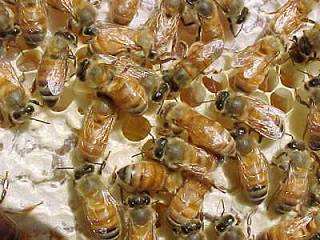A new study conducted at the University of Haifa and tried to check whether there is competition between honey bees and wild bees in Israel found that along with competition there are also understandings between the different types of bees

A new study conducted at the University of Haifa that tried to check whether there is competition between honey bees and wild bees in Israel found that along with competition there are also understandings between the different types of bees. "It is possible that the mechanisms of reducing the competition are the result of the prolonged coexistence between the bee species," said Dr. Afrit Shavit, who conducted the study.
The research, conducted under the direction of Prof. Amots Dafni and Prof. Gidi Naaman, was conducted over 4 years, during which the visits of the bee species to the various plants in Ramat Handiv Park, on the Nof Carmel road and on Mount Miron were examined. According to the researcher, Israel has over a thousand different species of wild bees. In previous studies conducted, it became clear that the honey bee, which began as a wild species and was cultivated about 4000 years ago, tends to push the local wild bees away from their food sources. Therefore, it could be expected that even in Israel the honey bees will crowd out the local bees.
Indeed, the research findings showed that when there are hives of honey bees and the cultivated variety is in the vicinity, there was a significant decrease in the visits of the wild species to the test plants - three species of sage and two species of clover. It was also found that some of the wild species preferred to be separated from the honey bees as much as possible and they found other plant species from the moment the honey bee hives were introduced. If so, in some cases it was found that the bees found an arrangement of "peace". The research findings showed that in these places the bees divided the flowers among themselves in a spatial way - that is, bees preferred to visit flowers and branches visited by members of their own species and avoided visiting flowers previously visited by other species.
As mentioned, according to Dr. Shavit, one possible explanation for the coexistence can be rooted in the many years that the honey bees lived side by side with the wild bees in Israel, which caused them to distribute the food source spatially. She further added that despite the spatial division, the large increase in the quantities of honey bees may well endanger the continued existence of the wild bees.

3 תגובות
end"!!!!!!!!!!!!!!!!!!!!!
Amazing !!!!!!!!!!!!!!!!!!!!!!!!!!!!!!!!!!!!!!!!!!!!!!!!! !!!!!!!!!!!!!!!!!!!!!!!!!!!!!!!!!!!!!!!!!!!!!!!!!!!!!!!
The Destroyer ~!!!!!!!!!!!!!!!!!!!!!!!!!!!!!!!!!!!!!!!!!!!!!!!!!! !!!!!!!
Amazing!!!!!!!!!!!!!